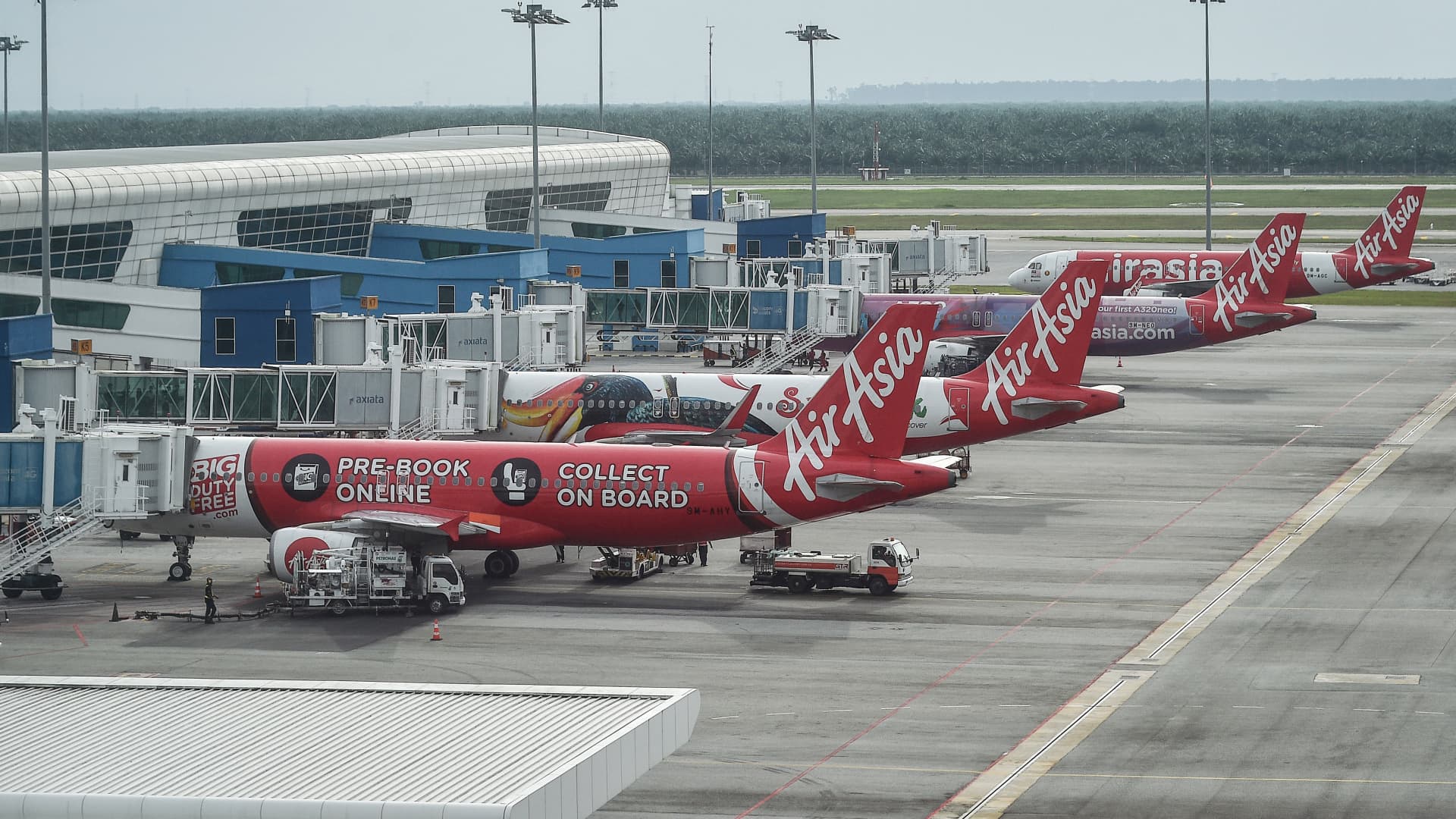
AirAsia airplanes are pictured on the tarmac at Kuala Lumpur International Airport in Sepang on January 8, 2024. Malaysian conglomerate Capital A intends to sell its budget carrier business to medium- to long-haul affiliate AirAsia X in a major consolidation of the country’s airline industry.
Arif Kartono | Afp | Getty Images
AirAsia is set to list its brand management unit on the Nasdaq after finalizing a SPAC merger, as it bets on the appeal of franchise and licensing opportunities to a U.S. audience that does not yet widely know the budget airline.
Tony Fernandes, AirAsia founder and CEO of Malaysia-based Capital A Berhad — which owns the short-haul airline and related units including the brand business — told CNBC this week that he would seek to raise awareness of the potential in Southeast Asia’s nearly 700-million-strong population and beyond.
“We picked America because Americans understand branding better than the markets in Southeast Asia,” Fernandes said, acknowledging that the AirAsia brand itself is not well known in the U.S.
“It’s my job to get investors excited about the growth potential of our brand … and also being in a very exciting part of the world, with geopolitics, Asean has received much more attention.”
Brand licensing opportunities could include hotels, mobile services and airlines in markets such as south Asia and Africa where AirAsia does not have subsidiaries, Fernandes said.
The deal values the new company, Capital A International, at $1.15 billion, according to a release Wednesday. The business will also look at acquisitions and licensing its 14 other brands.
In 2001, Fernandes bought the then-failing carrier AirAsia from the Malaysian government for one Malaysian Ringgit (roughly 20 cents) and 40 million Ringgit in debt. The low-cost airline has grown to a fleet of more than 240 aircraft currently.
Fernandes is engaged in a broader battle to lift Capital A Berhad out of the financially distressed status it received from Malaysian regulator during the pandemic and source capital injections to fuel further growth.
A major part of that is its plan to sell off AirAsia’s core short-haul aviation business, comprising several regional subsidiaries, from Capital A Berhad to its Malaysia-listed sister firm Air Asia X — its mid- to long-haul business. That will create a unified Air Asia Group, Fernandes said, which is targeting a $400 million equity raise, according to Reuters.
Subject to regulatory approval, the deal finalized Wednesday with Aetherium Acquisition Corp.— a special purpose acquisition company, or SPAC — will result in Capital A International going public on the Nasdaq stock exchange. A SPAC is a publicly traded company formed solely to merge with or acquire another company, providing it with a swifter path to a stock market listing.
Tony Fernandes, chief executive officer of AirAsia.
Bloomberg | Getty Images
SPACs saw a boom in popularity in 2020 and into 2021, amid frenzied market activity at the height of the Covid-19 pandemic. That flow slowed sharply in 2022 as numerous companies failed to meet lofty expectations and as market volatility and interest rates began to rise.
“Why a SPAC? I see it really as a reverse listing in America,” Fernandes said. “SPACs have got a bad name because a lot of these were, I’m going to be frank, hair-brained business schemes, sending people to the moon… We’re generating real cash flow, real profits,” he added.
On a smaller scale, AirAsia’s path will mirror that of Singapore-based, Southeast Asia-focused Grab, a “super app” service which began trading on the Nasdaq in Dec. 2021 after closing a SPAC merger.
The Softbank-backed company has faced a turbulent ride, with shares tumbling on their first day of trade and languishing since.
“Like it or lump it, Grab has set the way by showing that a Southeast Asian company can list in America,” Fernandes said. “It’s not going to be a walk in the park, we’ll have to work [for] it, but while we might not be as well known in America, the concept of what we’re doing is better understood in that part of the world.”
